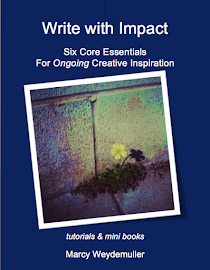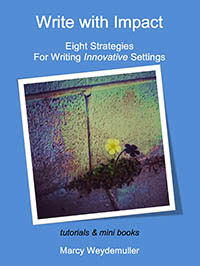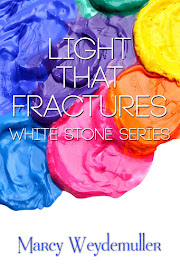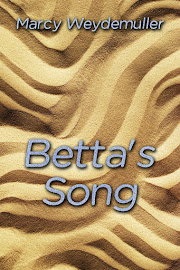Saturday, December 22, 2018
Dream Makers Writing Prompt (3)
Daybreak in Alabama by Langston Hughes
“When I get to be a composer
I’m going to write me some music about
Daybreak in Alabama
And I’m going to put the purtiest songs in it
Rising out of the ground like a swamp mist
And falling out of heaven like soft dew.
I’m going to put some small trees in it
And the scent of pine needles
And the smell of red clay after rain
And long red necks
And poppy colored faces
And big brown arms
And the field daisy eyes
Of black and white black white black people
And I’m going to put white hands
And black hands and brown and yellow hands
And red clay earth hands in it
Touching everybody with kind fingers
And touching each other as natural as dew
In that dawn of music when I
Get to be a composer
And write about daybreak
In Alabama.”
1. Write a brief prose
piece about what your dream looked like in the past, or looks like now.
2. What strikes
you the most about the author’s use of senses? What do you see, hear, touch,
smell, taste in this poem?
3. Re-write your
prose piece adding sensory detail.
Closing
After
a few days re-read the three poems and your response to each. What comparison
of your dreams have you experienced that relates to the models Langston Hughes
gives in these poems?
Write
your own poem.
1. Do you see a re-connection to the power of
dreams in one’s life?
2. Which sense of voice at what age, or
emotions, do you most identify with?
3. What is your new dream?
4. If a writer what idea starter do you see
as a new project: picture book, short story, character, incident scene, or new
research.
5. In whatever art or life form you have for a
new dream to follow this year—what are your first steps?
6. Choose one step to do the first week of
this new year.
Labels:
Creative Writing Prompt,
Daybreak in Alabama,
Dream Makers. Writing Prompts,
Langston Hughes,
Poem
Thursday, December 20, 2018
Dream Makers Writing Prompt (2)
As I Grew Older by Langston Hughes
“It
was a long time ago.
I have almost forgotten my dream.
But it was there then,
In front of me,
Bright like a sun--
My dream.
And then the wall rose,
Rose slowly,
Slowly,
Between me and my dream.
Rose until it touched the sky--
The wall.
Shadow.
I am black.
I lie down in the shadow.
No longer the light of my dream before me,
Above me.
Only the thick wall.
Only the shadow.
My hands!
My dark hands!
Break through the wall!
Find my dream!
Help me to shatter this darkness,
To smash this night,
To break this shadow
Into a thousand lights of sun,
Into a thousand whirling dreams
Of sun!”
I have almost forgotten my dream.
But it was there then,
In front of me,
Bright like a sun--
My dream.
And then the wall rose,
Rose slowly,
Slowly,
Between me and my dream.
Rose until it touched the sky--
The wall.
Shadow.
I am black.
I lie down in the shadow.
No longer the light of my dream before me,
Above me.
Only the thick wall.
Only the shadow.
My hands!
My dark hands!
Break through the wall!
Find my dream!
Help me to shatter this darkness,
To smash this night,
To break this shadow
Into a thousand lights of sun,
Into a thousand whirling dreams
Of sun!”
1. How does the wall metaphor impact this
poem? What other feelings or emotions does it imply?
2. Identify and list places where your dreams
were stopped or side-tracked, delayed, or changed. Next to each write down one
to three metaphors that express the situation.
3. Choose one metaphor and expand it by
saying other ways you could describe it.
4. Re-write that chosen incident either as a
poem or prose piece incorporating your metaphor, and if appropriate, the voice
age at which the incident was experienced.
Labels:
As I Grew Older,
Creative Writing Prompt,
Dream Makers. Writing Prompts,
Langston Hughes,
Poem
Tuesday, December 18, 2018
Dream Makers Writing Prompt (1)
Dream Makers Writing Prompt
Readings: Poems by Langston
Hughes
The
Dream Keeper
As
I Grew Older
Daybreak
in Alabama
Process:
Read
Assigned Poem
Exercise:
Write down any words that jump out to you and then consider their Definition or
Explanation or Questions they spark.
Freewrite:
Without considering sentence structure or punctuation, write down everything
that comes to mind. Maybe set a timer for five or ten minutes.
Writing
Prompts: Set your notes away for a few hours or a day and let the ideas float
for a while. Then take a short block of time to respond to the poem or the
questions for each one.
Dream:
What connection did you make to this word personally in this poem?
The
Dreamkeeper by Langston Hughes
“Bring me
all of your dreams.
You
dreamers.
Bring me all
of your heart melodies
That I may
wrap them
In a blue
cloud-cloth
Away from
the too-rough fingers
Of the
world.”
1. What were some of your dreams as a child,
a teen-ager, a young adult, and now?
2. Which word in this poem do you most relate
to?
3. Which words do you wish you could relate
to?
Labels:
Creative Writing Prompt,
Dream Makers. Writing Prompts,
Langston Hughes,
Poem,
The Dream Keeper
Thursday, December 13, 2018
Journal With Impact: Overview
Workshop:
Six Conversations for Writing Creative
Journals
“Surely
a kind of fascination or a deep desire to learn more about a subject must be there from the start.” Jane
Yolen
Whether you have been exploring a journal
memoir, or nature, or travel, or family, or vocation, or ongoing reflection,
your material has been growing. If
you decide you’d like to begin sharing your thoughts with others one-to-one, or
as a blog, or in articles, or books the next steps can become basic outlines
and categories to see where your content is overflowing or where it is slim and
needs more research or personal involvement.
Think in terms of a preliminary outline to
gauge your primary purpose and direction.
What is your
story/subject about? Where did it start? Is it an idea to explore, a character memoir,
a significant place, or a feeling that sent you on a search?
What is your
delivery voice? The delivery voice, like any story, includes the writer’s voice,
which must be the consistent voice of your work and worldview. It includes the:
narrator’s personae/personality
attitude towards the subject
world at large.
What
language style will engage a conversation between you and your reader? What words
will sing from your story to your readers’ hearts?
And
with whom do you most want to share? When you know that the above questions
will almost answer themselves.
Hope
you continue to enjoy journaling.
Thank you for reading and participating in this
year’s blog. In January the new writing blog will be based on my workshop Words
That Sing. Below is an excerpt exercise on a language search for when you just
need the right one for a particular reason or moment.
And for those of you who would like some small
snippets to journal on for a few more weeks, I am posting three blogs based on
poems by Langston Hughes as you consider your own dreams for the coming year.
Holiday Blessings and Happy New Year.
Action
Steps:
Here’s
a brief excerpt from an opening paragraph from an exercise called Quilting in
the Ditch, given by James McKean in the book The Practice of Poetry.
“Choose a
particular item or activity and make that the object of the language search.
Find out as much as possible about the language associated with that object,
especially active and concrete verbs, the history of the names used for that
object, and terminology that seems especially colorful. Then save from your
search a list of nouns, a list of verbs and a list of adjectives.”
I’m
focusing on this section only as a variation on the list poem as well as a
general search for key metaphoric and rich words. The first run may or may not
contain usable words, but by doing so you’ll spark imagination. And/or you may
discover just what you needed for a particular sentence or detail.
Here’s
an example of one word I searched just on the surface. I didn’t take his next
step of research on this. Dividing the nouns, verbs and adjectives gave me
sufficient material for my needs at that time.
Word=Compass
Nouns Verbs Adjectives
arc enclose curved
spatial
position draw navigational
instrument determine indicator
directional
device pivot magnetic
circular
cord ‘moveable
rigid legs
hinged at
the end’
I
ended up with fifteen words to choose from. The next word I choose to search
was navigate for which I ended up with thirty-six words.
To
my surprise I was actually able to incorporate the moveable rigid legs.
Have
some creative exploration.
Share: What surprised
you?
Read deep, marcy
Saturday, December 8, 2018
Book Review: Writing BLURBS THAT SIZZLE and Sell! by Karen S. Wiesner
WOW! Once again
Wiesner has expertly taken a critical aspect of a writer’s necessary abilities
and made it understandable and, even more important, doable.
Most of the authors I know cringe at the word blurb and even
the ones who are capable without extreme stress see them as a necessary evil.
This book gives a well- needed tutorial for each potential blurb format.
The various versions, and the many ways, blurbs are
misunderstood or misused has been both startling and encouraging. Knowing what
is a wrong approach and why clearly explains why so many authors find them
almost terrifying. But after listening to Karen S. Wiesner’s clarity they now
become an interesting and strong resource to complement each individual book.
Right now there is so much misuse or misinformation
regarding blurbs that the need to have them each stand out is undermined.
Blurbs That Sizzle takes each detail, explains the purpose, points out the
potential pitfalls, differentiates between genres and readers, gives tips,
offers clear techniques, and shares multiple examples and exercises to evaluate
and “to hone effective good blurb writing skills.”
One quality I extremely appreciate in all of her writing
books are the hands on step-by-step examples and worksheets for every tool she
discusses. Here she doesn’t only explain the differences between High-Concept
Blurbs, Back Cover Blurbs, and Series Blurbs but shows a wide range of
examples—both bad and good—then walks us through the process for our own
stories.
A blurb is meant to be for the reader, she says, not the
many other versions. It is to invite your reader to enter into a compelling
story. “The purpose of the blurb is a-three fold C for a reader: capture, (to provide) content, (to give a reason to) care.
In Writing BLURBS
THAT SIZZLE and Sell! we can learn to sizzle too.
Read deep,
marcy
Labels:
Book Review,
Five Stars PLUS,
Karen S. Wiesner,
Write with Impact,
Writing BLURBS THAT SIZZLE and Sell
Thursday, December 6, 2018
Journal With Impact: Memoir Theme Poetry
Workshop:
Six Conversations for Writing Creative
Journals
“A ‘we’
approach makes the reader feel that the writer is with him, not talking at
him.”
Jane Fitz-Randolph
“How long, O Lord, will I call for help, and
Thou wilt not hear?
I
cry to Thee, ‘Violence!’ Yet Thou dost not save.
Why
doest Thou make me see iniquity, and cause me to look on wickedness?
Yes,
destruction and violence are before me; strife exists and contention arises.
Therefore
the law is ignored and justice is never upheld,
For
the wicked surround the righteous; therefore justice comes out perverted.”
Protest
also encompasses a deeply spiritual perspective as well, as we hear from
Habakkuk when the Chaldeans assaulted Judah. (Chapter 1:2-4 NAS version)
Self-development
style essays are undergirded by empathy, and a sense of “we” are in this together. It’s not
coming from a telling attitude but rather as someone who has walked this path
and is a listening ear. These article types are both compassionate and
inspirational. Their applications apply to memoir poetry as well, with the focus being more heart and soul.
The
range can be very wide from dealing with emotional situations, like anger
management, confrontations, like being bullied, health issues and family
tensions, as well as career choices and developing skills.
Sometimes
turning the topics, and themes into poetry can amplify your connections in
fresh and innovative ways. Like the vignettes they can become an introduction,
or opening, or an example of your memoir’s theme and a consistent thread.
Even
if you don’t decide to use the poems in your published version, writing them
can deepen insights whether or not you have ever written a poem. Even basic
lines can deepen perspective.
Action Steps
1. Make a list
of the struggles you have experienced either personally or with a close family
member.
2. Choose one
that made a significant change in your life, either by an attitude perspective
or by a specific course of action.
3. Write it up
as if you are sharing one-to one with a close personal friend.
4. Using the
guideline below write a few of your thoughts in poetry.
Share: What words
of hope do you want to share in your memoir?
Read deep, marcy
List Poems are one way to develop images and
discover word connections.
1. Write a list poem. This works well for non-poets
to get past the inner critic and just write for fun. It also helps get us in
touch with abstract concepts.
Choose one of the following words: hope, love, faith, trust, beauty and do a cluster brainstorm for it.
2. Now write up
your thoughts as a list poem adding whatever new ideas rise to the surface as
well.
Keep writing the repetition in each line:
hope is…
or, I believe beauty…
or, set up as a question; is love…?
Or, can love be found in a …..?
3. Leave it alone for a day or two then come
back. Now go down your list of images. Can you change each line into a metaphor?
For example: hope is ...a waterfall. Hope is a waterfall like rushing wind.
Hope is an
hourglass waterfall.
Although
you may not end up using the words themselves, the practice will help you
connect to the emotion you want your situation to generate heart to heart.
Labels:
Free blog workshop,
Journal with Impact,
Memoir,
Poetry,
Six Conversations,
Theme,
Writing Creative Journals
Thursday, November 29, 2018
Journal With Impact: Memoir Theme Non-Fiction
Workshop:
Six Conversations for Writing Creative
Journals
Excerpt
from Puerto Rico, Feb 23, 1968, by
Denise Levertov
“…You see how it is—I am
angry that they feel no outrage. Their feelings flow in the wrong directions
and at that wrong intensity. And all I can bring out of my anger is a few
flippant rhymes. What I want to tell you—no, not you, you understand it; what I
want them to grasp is that though I understand that Mitch may have to go to
jail and that it will be a hard time for him and for me, yet, because it’s for
doing what we know we must do, that hardship is imaginable, encompassable, and
a very small thing in the face of the slaughter in Vietnam and the other
slaughters that will come. And there is no certainty he will go to jail.”
The
well-known guidelines for solid nonfiction are still the basic who, what, when,
where, and how, but the undergirding purpose is why.
Curiosity—Communication—Connection.
Nonfiction
sings when curiosity begins a dialogue of interest. When an author has a connection
with their topic and a desire to share, then trust is built.
Focus on the heart
of your topic, your potential audience age, the questions you need to research
for clarity, confirmation of truth, vocabulary, and the impression you desire
to share from your specific experience.
“People
are always interested in other people.” Jane Fitz-Randolph
Find
the Angle. For example, Deloris
Jordan wrote a memoir story for children of her famous son when he struggled
playing basketball at the neighborhood park one particular summer, and how his
commitment turned his despair into success. This one specific insight into this
gifted athlete opened up a whole new generation to recognize love, family,
perseverance, and faith through this true story.
Be
interesting to a broad range Audience. Regardless
of your immediate intended audience look for the themes that are universal and
ageless, and their truths will cross age, race, and culture. Life matters.
Be
Authentic. The research needs to be
solid. If you include interviews be sure to get permission. If you are doing
historical research and find conflicting material give the reasons for the
discrepancy and why it is an issue.
Find
fresh material or Application. For
example, women played a much more dangerous role in many battles, such as World
War ll, that were not acknowledged or revealed at the time due to danger for
them and their work.
The
movie Hidden Figures unveils the three women math geniuses that played such an
important role in NASA. Why did it take so long to release their stories? What
factors will connect to your specific audience and age group? What do you want
to be made open that was hidden?
Action Steps:
Begin
to ask the questions now. Use the italic outline to write
down potential ideas.
1. Who is your intended target audience?
2. What will be the reader expectations be that
you need to include?
3. What overall effect do you want your
readers to leave with?
a. Hope? What kind: emotional, physical,
spiritual?
b. Solutions? What kind: cost, time, and/or
relational?
c. Entertainment: Why? Long term—short term?
4. Write up a
sample outline for an interview to fill in either in person or for research
material.
Share: What did you
choose in step three and why?
Read deep, marcy
A Few Interview
Suggestions
1. Be clear regarding what you want to
discuss.
2. Do the interview in a location that will
make both of you comfortable and at ease without interruptions.
3. Be clear on boundaries and time
commitment.
4. Ask if you can record.
5. Don’t interrupt but note where you would
like more details and ask later for clarification.
6. Build up to any difficult questions. Wait
until the end to ask them.
7. Be considerate of any emotional trauma
your questions create and be sensitive.
8. Offer to show share the material once you
have written it to be sure it’s acceptable to your interviewee before you
publish.
Labels:
Free blog workshop,
Journal with Impact,
Memoir,
Non-Fiction,
Protest Theme,
Six Conversations,
Writing Creative Journals
Thursday, November 22, 2018
Journal With Impact: Memoir Theme Fiction
Workshop:
Six Conversations for Writing Creative
Journals
As I mentioned earlier one approach that Michael J Bugeja
suggests through vignettes is over-arching threads for perspective and voice
and theme. For the next three categories of memoir I’m sharing a few of his
examples using the theme of protest as theme joins perspective and voice in
memoir delivery.
Bugeja
notes that “protest poetry, songs, stories came, I think, in greater quantity
and public awareness during the sixties when anti-war, anti human rights, anti
discrimination became a more public voice. Not that these issues or advocates
had not existed before but the ability or resolve to act upon protest spread. Some
of the protests came in unaccustomed ways, and in fresh voices not seeking
personal gain.”
Whatever
theme we discover in our journals and memories we are looking to share a fresh
voice from one heart to another. Each delivery has its own special strengths
and weaknesses. So first we prepare our musings and then choose which format
best expresses our insights. Fiction—non-fiction—poetry each captures theme in
a different way.
“Fiction
often allows a glimpse into hidden motives or perhaps silent protest. In Invisible Cities, by Italo Cavino, Marco
Polo shares stories of cities with Kublai Khan.”
Here’s
a sound bite from the city Valdrada that speaks volumes.
“At times the mirror increases a thing’s
value, at times denies it. Not everything that seems valuable above the mirror
maintains its force when mirrored. The twin cities are not equal, because nothing
that exists or happens in Valdrada is symmetrical: every face and gesture is
answered, from the mirror, by a face and gesture inverted, point by point. The
two Valdradas live for each other, their eyes interlocked; but there is no love
between them.”
And
a more personal example from Sandra Cisneros, The House on Mango Street in the chapter My Name.
“And the story goes she never forgave him.
She looked out the window her whole life, the way so many women sit their
sadness on an elbow. I wonder if she made the best with what she got or was she
sorry because she couldn’t be all the things she wanted to be. Esperanza. I
have inherited her name, but I don’t want to inherit her place by the window.”
Sometimes
when gathering together your experiences, emotions, and expectations to choose through
which lens you want to present, it is helpful to look at it through a fictional
stance. This way you can view your story as if a reader to gain a neutral
opinion. Then when you have chosen your focus and voice you can return to
nonfiction.
Or
another reason some authors choose a fiction format for their story is if there
are too many missing parts, if for example, you are including family history
before your time and have large gaping holes. Fiction enables you to do
research into the era and events current then. And still be completely engaged
emotionally as the example My Name
captures the atmosphere and circumstances.
Action
Steps:
1. If you have discovered a theme of protest
in your perspective maps and voices then use the following action steps to
develop them further. Or choose another theme that has become more relevant and
substitute it for protest and show it through a “glimpse into hidden motives.”
2. Make a list of times you have protested in
different categories: personal issues, spiritual prayers, anti-…… for community or worldwide issues.
3. Which ones did you protest silently and which out
loud?
4. Choose one that had the most positive outcome and
one the most negative and write each of them as a vignette in either fiction or
non-fiction or both.
Share: Which example on your list
touched your heart with the strongest desire to change?
Read deep, marcy
Note: You can
approach these questions for a real person as well, especially if you are looking
back to a specific time period. Think of them as character development set in a
narrative scene.
What If
Questions For Fictional Characters
Who
is the main Character?
Who
or what is the antagonist?
Who
are the other people in the story?
What
does the main character want?
How
important is it for him to get it?
What
does the antagonist want?
How
does he/it prevent the protagonist?
Results-initial
action
Struggles
lead to (crisis)
Climax
Outcome
Theme
Labels:
Fiction,
Free blog workshop,
Journal with Impact,
Memoir,
Protest Theme,
Six Conversations,
Writing Creative Journals
Subscribe to:
Posts (Atom)








